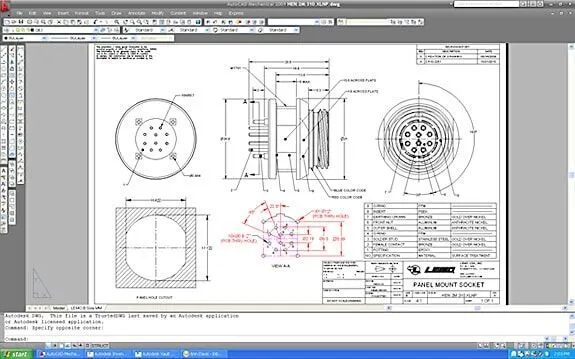AutoCAD Fiber Optic Designs & Drawings


Before proceeding forward in explaining the affinity between AutoCAD and Fiber Optic, it would be prudent to rationalize the utility of optical cables. When communicating between systems, either via the internet or via an internal network system, a medium needs to be in a place that can facilitate the transmission of data, both sending and receiving.
There are numerous options available for laying down communication mediums, such as coaxial cable, DSL, phone lines, etc. Of all these options, the most favored one is optical cables because they offer uninterrupted swift data transmission. In theory, the optical cable is composed of assimilation of glass wires and each glass wire has the capability of transmitting data by transforming them into light waves. The worrying factor of bandwidth is ruled out and data packets can be transmitted in abundance.
Optical cables are less prone than other communication mediums, and hence they invulnerable to interference. Optical cables are thin and occupy less space. The fundamental difference in installing fiber cables is that the data is transmitted digitally as opposed in analog form.
ITS-NET DESIGN
The “ITS-NET DESIGN” is a software that has been developed to create FTTH/FTTX graphical and in-depth network blueprint. The scope is to ensure the reporting of all pertinent paraphernalia and installation guidelines as per the project specifications. The full version of the application, with ITS-NET DESIGN functionality, strengthens the designing, drawing, and engineering function of FTTH/FTTX.
During the designing and drawing phase of the optical network, the developer needs to keep in mind that there are certain limitations to it. All the optical cables are expensive material and its installation requires the utmost care. The developer should know the maximum threshold of “bent radius” as it could easily break. Even adding tension, pressure on the optical cable can cause twisting.

Since a large part of technology and communication is slowly converging from traditional metal sheets to new optical cables, a substantial chunk of communication industry has engaged design engineers, who are well versed with CAD / CAM-related applications. The major sectors include corporations conducting their business operations in telecommunication, internet, and television cable.
Since the global scenario is entering into a cutthroat competition, industry leaders want to take advantage of this scenario and engage developers who can remodel their existing network topology. They are eyeing for engineers who are fluent in engineering and drafting services and know all the dynamics in the process of designing and drawing. Particularly, civil engineers and project managers are in much demand.
The design and drawings should be on large-scale infrastructure. To put it simply, civil engineers must have the ability to create a synergy between the dynamics of both the applications and produce designs and drawings.
For up-to-date information from CAD/CAM, check out our blog.
Recent Posts


CAD Outsourcing Doesn’t Have to Be Done In India
CAD Outsourcing Doesn’t Have to Be Done in India Do a Google search for “CAD Outsourcing” and what you’ll find is lots of firms located in India, which is fine if you’re prepared to go off-shore for CAD services. But what if your U.S. based company prefers to stay a...

CAD Outsourcing: How to Get the Most Out of Engineering
In today’s competitive market, companies need as much help as possible. If you want to take a larger market share, you can start by outsourcing some of your work. This is a quick way to expand your engineering power without onboarding and training a new staff. This...

CAD Translations—What You Should Know
What is a CAD translation, and how does that differ from Raster to Vector conversion? Raster to vector conversion means taking a scanned raster file and changing it to a vector file. However, a CAD translation means taking a vector file that is in one format, usable...
